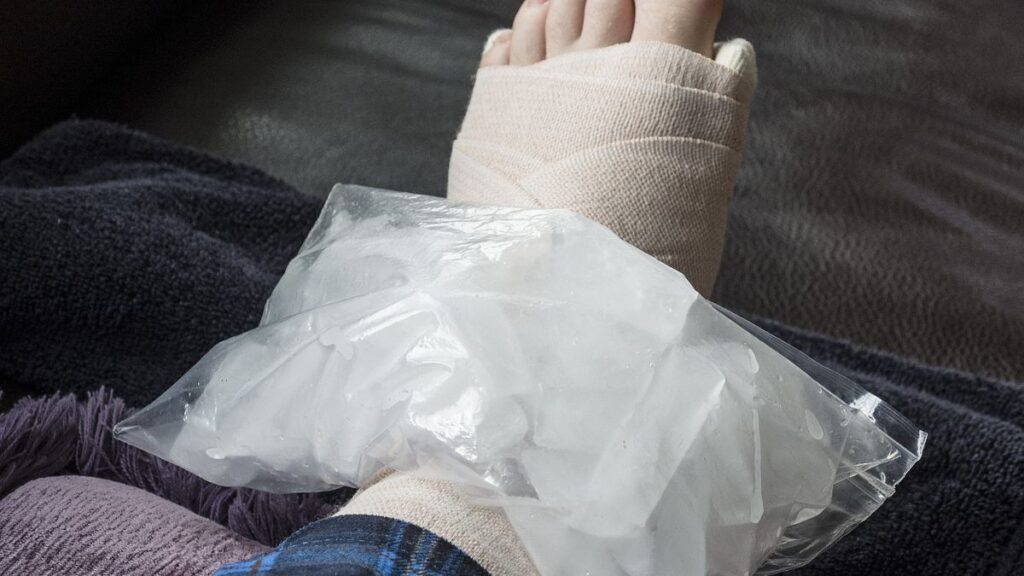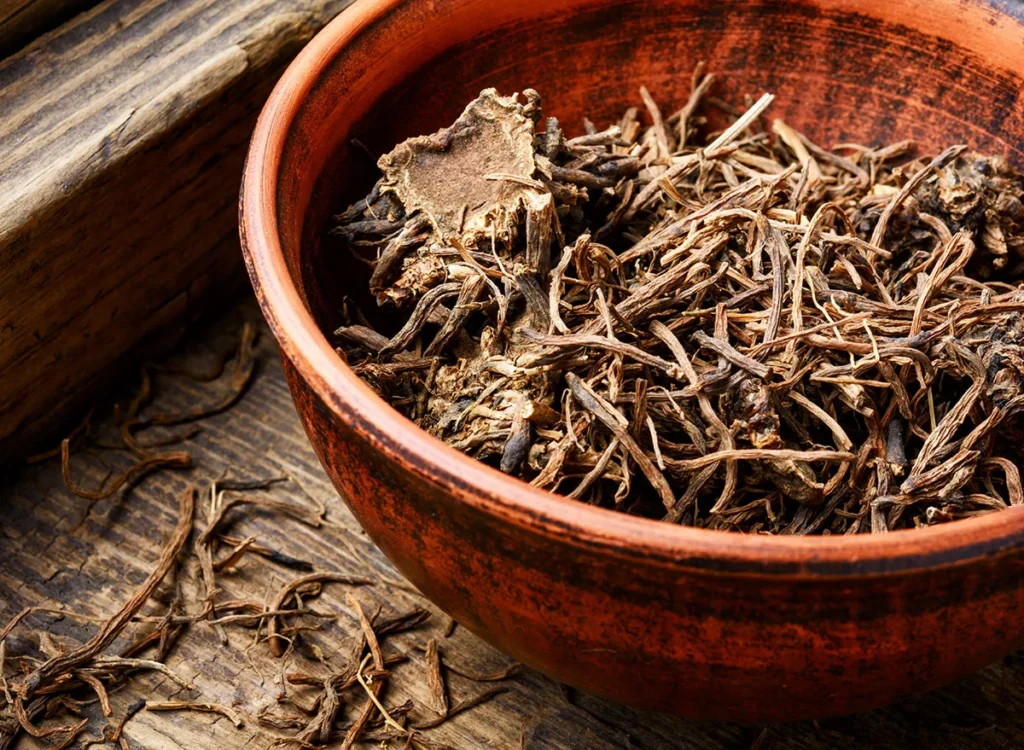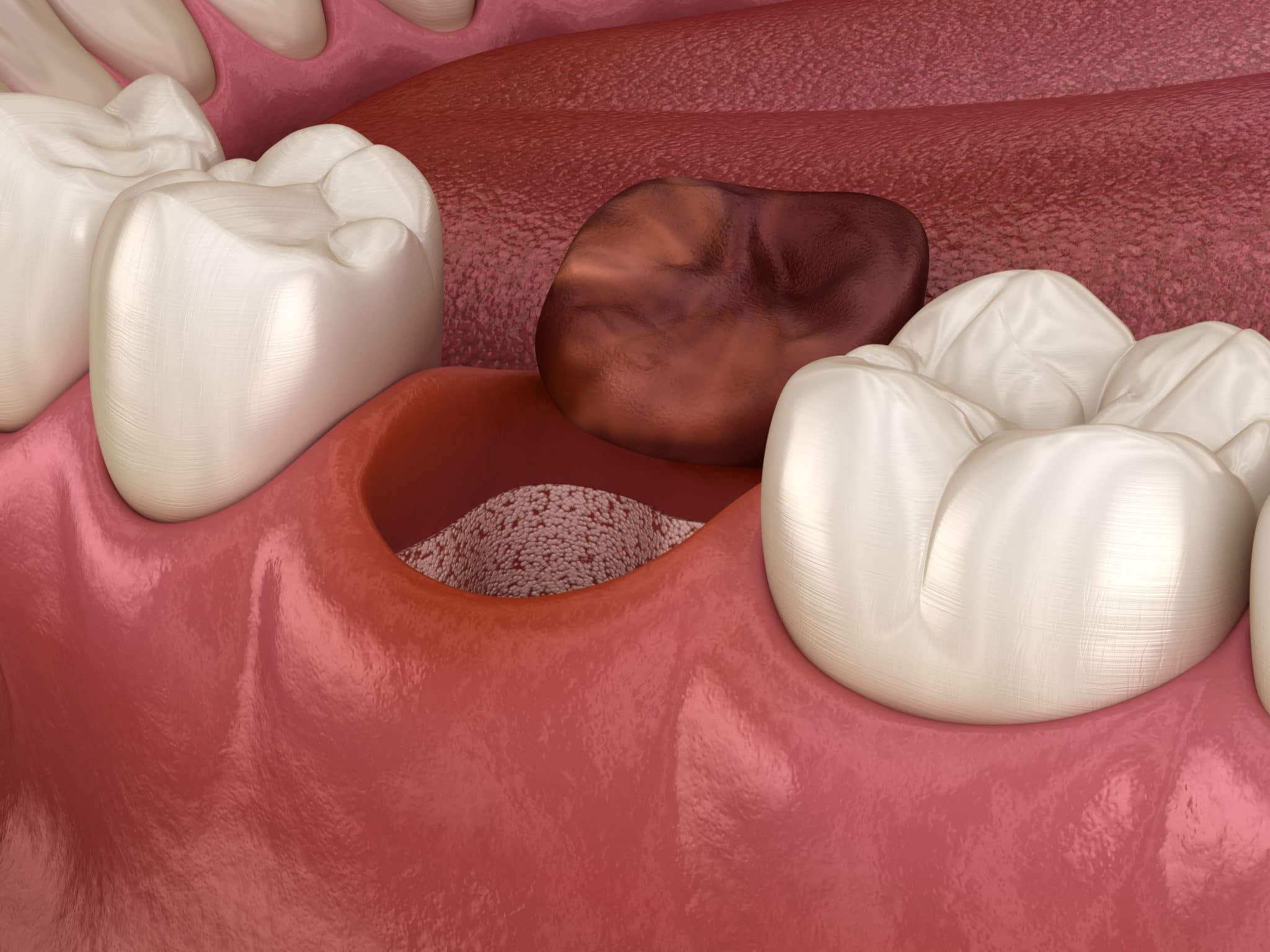We all know how dreadful it is to face the dentist, but what’s worse is the after effect we are often left with.
The post-extraction pain of teeth might be a scary problem. This sharp pain is known as dry socket. The traditional pain relievers are costly and come with obvious side effects. It is also very difficult to book an appointment with the dentist at the right time!
You can use natural home remedies to get immediate relief.
What is Dry Socket?
2-3 days after tooth extraction a sharp pain starts which persists for a few days. This is dry socket or Alveolar osteitis(1).
Dry socket only affects 2-5% of the people and is easily treatable. We all know that after any cut or injury our body heals through clot formation.
The clot is the backbone for the growth of new bone and the formation of soft tissue over the clot. Similarly, when extraction of tooth takes place, clot formation occurs. This clot protects the wounded socket and heals the socket.
However, when the clot ruptures or dissolves there occurs an exposure of the socket.
The nerves and the blood vessels are open to fluids, food, and air and thus there is a stop to the normal healing process, leading to pain.
Dry socket is a common phenomenon; It occurs when we don’t take care after extraction of the tooth and don’t follow the proper instructions of the dentist.
This article will discuss more about:
- Dry socket remedies
- When you have a higher chance of having dry socket
- Signs and symptoms of dry socket
- How to prevent dry socket
- Instructions that you should follow after oral surgeries
The following are a few ways you can treat dry socket at home.
1. Cold Compression with Ice
Applying an Ice pack to the swollen area reduces the pain and gives a numbing effect. The decreased temperature has a numbs the nerves that assist in eliminating the pain sensation.
You should apply Cold compression at least 2-3 times a day as it reduces the pain and also speeds up the healing process.
You can do it by either a cold compression bag or just by putting a cloth in cold water.
2. Clove Oil in Affected Area
The dentist most widely uses it to treat dry socket. It acts both as an anesthetic and as an analgesic. It reduces inflammation and thus alleviates throbbing pain. (1)
With the help of clean cotton dipped in oil clove, place it in the socket for 5-10 min and then remove it, and then rinse the mouth.
Repeat the process for 2-3 times a day.
3. Tea Tree Oil Cotton Pack
The benefits of tea tree oil are that It reduces pain, infection and thus reduces discomfort. Moreover, it increases the speed of the healing process.(2)
Take a cotton swab and add to it a little bit of tea tree oil. Place this cotton on the socket and press it with dry cotton and then keep it for 5 min.
Wash your mouth thoroughly and do this for at least 2-3 times a day.
RELATED: Tea Tree Oil for Skin Tags: 8 Natural Remedies to Try Now!
4. Saline Water Mouthwash
It’s one of the most important remedies and is most prescribed by the dentists.
It has bactericidal action thus reduces the infection, and the warm water reduces swelling and soothes the pain.
However, you should rinse only after 24 hours.
This process is straightforward and highly effective
First, add salt to lukewarm water and then stir it and warm the solution
Then wash the mouth with warm saline water
Rinse as many times as possible, as it heals the socket very quickly.
RELATED: 11 Home Remedies for Swollen Gums for Instant Relief
5. Turmeric
Turmeric act as an anti-inflammatory, antibacterial and also gives anesthetic action.
It prevents further spread of infection and reduces the inflammation and size of swelling also give anesthetic action. (3)
First, a creamy paste is made with turmeric powder and water.
Apply it to the socket and left it for 15-20 min.
Repeat the process for 2-3 times a day.
6. Tea Bags
Tannic acid(4) found in tea is a natural antibiotic. It has properties that help in the prevention of infection and reduction of pain.
It also reduces the gingivitis or gum swellings.
Place an used tea bag in the socket.
Before placing the tea bag, dip it in how water for approximately 5 minutes then remove the excess water and then put it in the socket.
RELATED: 16 Spearmint Tea Benefits for the Health You Should Know
7. Apple Cider Vinegar
Apple cider vinegar has a role in maintaining an optimal pH thus reduces the inflammation. (5)
It reduces the bacteria the mouth thus reduces the chance of further bacterial infection.
Mix small amount of Apple cider vinegar in water, apply on the socket and let it dry, this reduces the pain.
8. Garlic
Garlic has antibiotic and anti-inflammatory property. It reduces swelling and pain. (6)
Take a piece of garlic and place around the socket and let it dry.
9. Hydrogen Peroxide
Hydrogen peroxide is bactericidal, which means it kills bacteria. It reduces throbbing pain and halitosis in the mouth due to dry socket. (7)
Use it by mixing 1 cup of hydrogen peroxide with 4 cups of water and the rinsing has to done
Apply this 3-5 times a day.
10. Valerian Root
Valerian root has an anesthetic action. It acts as a relaxing agent to the gums and thus reduces the pain. (9)
It also helps in faster wound healing.
Take some valerian root and boil it and then rest it for 10 min.
Then remove the root and take the tea.
11. Yogurt
The bacteria in the yogurt have antibacterial action.
These good bacteria kill the harmful bacteria in the mouth and thus promote healing faster. (10)
The yogurt should be consumed without adding anything and should be taken 3-4 times a day.
The yogurt should be free of sweeteners or artificial flavor as this would give an adverse action.
12. Aloe Vera
The herbs of the aloe vera leaves reduce swelling, inflammation and also relieves the pain in the bone. (11)
It has antibacterial, antiseptic, antimicrobial properties.
You can extract the liquid from the leaf of Aloe Vera tree.
Can then apply this gel directly to the socket. You can apply this to 3 or 4 times in a day.
RELATED: Aloe Vera Gel for Acne: 12 Sure-Fire Ways to Cure Acne
13. Peppermint Oil
Menthol has mild anesthetic or numbing properties that numb the pain.
The beautiful smell of peppermint also helps to decrease the halitosis. (12)
With the help of cotton swab, apply the peppermint oil directly in the socket.
You can use this for 2-3 times in a day.
RELATED: 8 Reasons to Use Peppermint Oil for Hair
14. Neem
Neem work as a healing agent
It has an action against fungal and bacterial microorganisms and thus decreases the chance of bacterial infection which may occur due to food particles. (13)
It also has anti-inflammatory properties, which soothe pain and swelling.
Take the neem leaves and add water and grind it to make a paste. Apply this paste to the wounded socket.
You can apply this paste to 3-4 times a day.
15. Chamomile
Chamomile acts as soothing ingredients which fight inflammation of the gums and thus reduces pain and swelling of the bone and relieves foul smell. (14)
It is also tranquilizing effect.
Take the dry chamomile leaves and boil it for 10-15 minutes. Cover it with a lid and set it aside to cool down. Strain the tea and consume it several times daily.
RELATED: 14 Health Benefits of Chamomile Tea (Backed by Science)
16. Avoid Hard Foods
During the treatment of dry socket, you should not consume hard food as this further worsens the condition. Instead, you should have soft food as this gives relief to the socket and heals faster.
17. Avoid Tobacco
Tobacco delays wound healing. Smoking tobacco creates a negative pressure which dislodges the clot and delays wound healing. (15)
The harmful chemicals and toxins in cigarettes and other forms of tobacco prevent healing. They may even contaminate the affected site and slow down the healing process.
RELATED: 12 Natural Ways to Get Rid of Gingivitis (That’ll Actually Work )
18. Syringes Water Spray
If you have food, sometimes the small particles may accidentally slip into the socket. These particles cannot be removed quickly, and it is impossible to touch the area because of the pain. So you can use the syringe to spray water from far away to get these particles out.
19. Gauze
Placing a piece of moist gauze on the dry socket can reduce the pain and swelling and prevent entry of foreign particles. It is one of the easiest home remedies.
You can utilize it by placing the gauze on the dry socket and bite down with the teeth to keep it in place.
When You May Have Dry Socket?
- People who smoke (cigarettes consist of deadly chemicals, and also other forms of tobacco may decrease the speed of healing and result in the contamination of the wound site. The negative pressure created while sucking on a cigarette may cause the clot to get dislodged from its place) (16)
- Have poor oral hygiene(if not cleaned properly then there might occur infection by microorganisms)
- In case of removal of wisdom teeth.
- Traumatic extraction.
- Excess bone removal during extraction.
- Use of birth control pills(high estrogen can lead to delay wound healing)(17)
- Rinsing and spitting a lot or drinking through straw ( this creates a negative pressure which dislodges the clot)
- Tooth or gum infection.
Signs and Symptoms of Dry Socket
- Severe pain after a few days of tooth extraction
- Loss of the blood clot, which may be an empty-looking (dry) socket
- Bone may be visible in the socket
- Radiating pain to ear, eye, temple or neck on the side of your face where a tooth was extracted
- Bad breath or a foul odor coming from your mouth
- Unpleasant taste in your mouth.
How to Prevent Dry Socket?
The first step is to refer to the dentist if the pain does not subside after 2-3days and the pain increases.
However, the following steps can be beneficial to manage dry socket
- Antibacterial or Betadine or chlorhexidine mouthwashes just after surgery will maintain proper hygiene.
- Use oral antibiotics, mainly if you have a weak immune system.
- You can apply an Antiseptic solution on the wound. (20)
- You should also use appropriate dressings after surgery.
Instructions You Should Follow After Oral Surgeries
After extraction of the tooth, proper care at home helps to improve clot formation and thus promote healing.
- First step is to have complete rest for a few days, as rest helps in speeding up the healing process. Heavy activity or work can lead to dislodgement of the clot, which results in a delay of healing.
- For the first 24hrs, it is good to have cold water as this would lead to the formation of the clot at a faster rate and manage pain.
- After 24hrs you have to rinse your mouth with lukewarm water. Along with it consume the prescribed antibiotics and painkiller at regular intervals.
- You should avoid beverages, caffeinated drinks, alcohol, as these delays the healing process.
- After the surgery do not use of straw for drinking purpose.
- Soft and cold food should be consumed on the first day. Hard and hot food should be strictly prohibited.
- Chewing should be avoided.
- After the surgery, rinse your mouth generally after 24 hours but avoid brushing the area to prevent injury.
- Avoid tobacco use. You should avoid any forms of tobacco, for at least 24hrs. As chewing or smoking tobacco leads to delay in wound healing, post-surgical pain, and further complications
Bottom Line
Dry socket is a widespread condition yet very painful. Treating it is comparatively easy if you know how to treat it.
Try the above-discussed home remedies for a quick and smooth healing experience. Give your feedback in the comment section.





